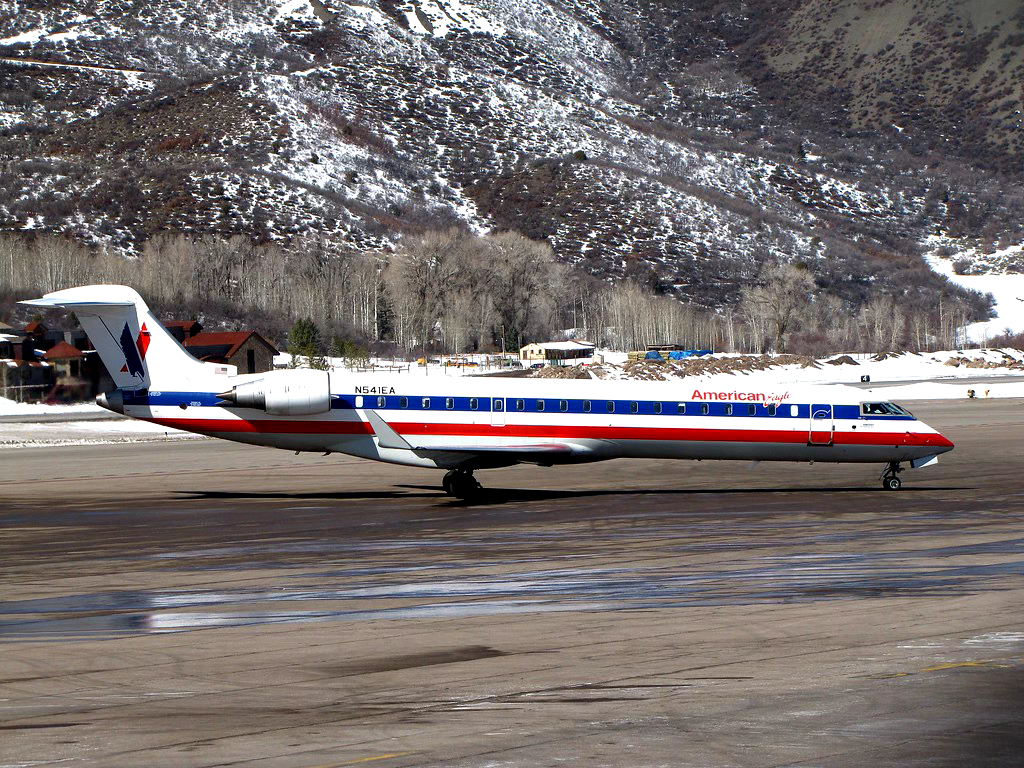Last weekend, I flew out of Aspen Airport (ASE) to Denver (DEN) – a simple, 22-minute flight. That is twenty-two minutes plus delay time on the ground which, last weekend, totaled to more than two hours. It was not just this one United Express flight in the afternoon of Sept. 13 – in fact, ASE is the second-most delayed airport in the country.
The Bureau of Transportation Statistics (BTS), which is “the preeminent [federal] source of statistics on commercial aviation,” has been collecting data on flight delays since June 2003. On average, in the 21 years since, one third of all Aspen Airport flights have been delayed by more than 15 minutes. At first glance, it would seem likely that these delays are because of Aspen weather (e.g. snowstorms). Extreme weather delays are a category on the BTS’s data – but they only delay 1.8% of Aspen flights, less than 1/50. This is significant – only 0.6%, or less than 1/100 of Denver flights are delayed by extreme weather, so three times as many Aspen delays are extreme-weather related compared to Denver. However, 1.8% of flights delayed due to weather is not very high, nor does it it account for the majority of delays out of ASE. This begs the question, if extreme weather is not causing an absurd one-third of all Aspen flights to be delayed, then what is?
Theoretically, the National Aviation System (NAS) also delays flights due to non-extreme weather conditions – but only two out of every 100 Aspen flights fall into that category. NAS delays (all causes, not just weather-related delays) account for one out of every seven delayed Aspen flights – but BTS statistics show that only 43% of all NAS-caused delays are due to Aspen weather. This is higher than the national average (27%) but not significantly so – Denver Airport sees 42% of its NAS-caused delays because of weather. Added together, all weather delays (including non-extreme weather) at ASE only delay one out of every 25 flights.
51% of all delays attributed to the NAS in Aspen are due to airport volume – that is, being unable to fly because there is no sky/runway space. This means a lack of space at the airport causes one out of every 50 flights to be delayed. Private and commercial flights receive the same level of prioritization in Aspen, but there is still not enough space to always accommodate all flights.
In addition to weather, more than 10% of all flights out of ASE are delayed by alleged ‘Air Carrier Delays’ – which the BTS defines as “due to circumstances within the airline’s control (e.g. maintenance or crew problems, aircraft cleaning, baggage loading, fueling, etc.).” In addition, 7.3% of all flights out of ASE are delayed by the incoming aircraft’s late arrival. This number does not account, however, for next-day flights delayed by the last flight the night before. The Federal Aviation Administration (FAA) requires pilots to rest for 10 hours after their last flight of the night before they can fly again. This is best illustrated using an example.
A plane scheduled for arrival at 10:00PM touches down in Aspen at 10:30. From the time that flight ends, the crew must rest for at least 10 hours before they are permitted to fly again. Let’s say the morning flight the next day is nine hours from then – that plane must be delayed an hour so that the crew can rest. It is unclear how the BTS logs crew rest-related delays – but they are likely “Air Carrier delays”, as it is the fault of the airline that they do not have an additional crew available to fly.
In addition, Aspen Airport is an airport for which all pilots must receive Special Pilot-In-Command (PIC) qualification. Why? The “Mountainous terrain in [the] immediate vicinity of [the] airport,” according to the FAA, requires “special procedures.” Therefore, even if a crew is available, they may not have the extra certification needed to fly into the airport – causing a delay until a certified crew can be found.
Only 5% of flights out of DEN are delayed by “Air Carrier Delays” – showing that, in Aspen, a flight is twice as likely to be delayed by the airline as in Denver. This may be due to the design of the Aspen Airport – which, in fact, is in violation of FAA terminal-to-runway space regulations, meaning the FAA is forced to limit the size of planes that can land at ASE to avoid a terminal incident. These delays could also be due to the availability of extra resources (more pilots, mechanics, etc.) at a large airport such as DEN – but no matter the (speculative) cause, it is obscene that airline errors cause 1/10 of Aspen planes to be delayed.
In addition, one out of every 16 Aspen flights will be canceled every day. (On a given day in February, for example, this means that two flights are likely to be canceled.) In addition, 3% of flights are diverted. While the Bureau of Transportation Statistics does not release cancellation causes, many Aspen flights are canceled due to weather – meaning nearly one out of every 10 Aspen flights does not reach its destination on time because of mountain weather patterns. This still does not account for nearly two thirds of all delays – but, compared to other airports, Aspen’s non-weather delay categories (diverted, air carrier, etc) are not significantly higher.
So what does this tell me when I am waiting in the terminal for two hours? Maybe it is the fault of the airline (10% likelihood) or the flight the night before getting in late – but really, the majority of Aspen flights are not delayed. Humans tend to remember the one time something goes wrong a lot more than they remember all the times it did not.
So yes, maybe the airlines could marginally improve their operation in Aspen. Maybe Aspen could work on building a more weather-agnostic flight system – but really, the next time I am delayed, I will just try to remember all of the times I was not.
Why are Flights so Delayed out of the Aspen Airport?
October 21, 2024








